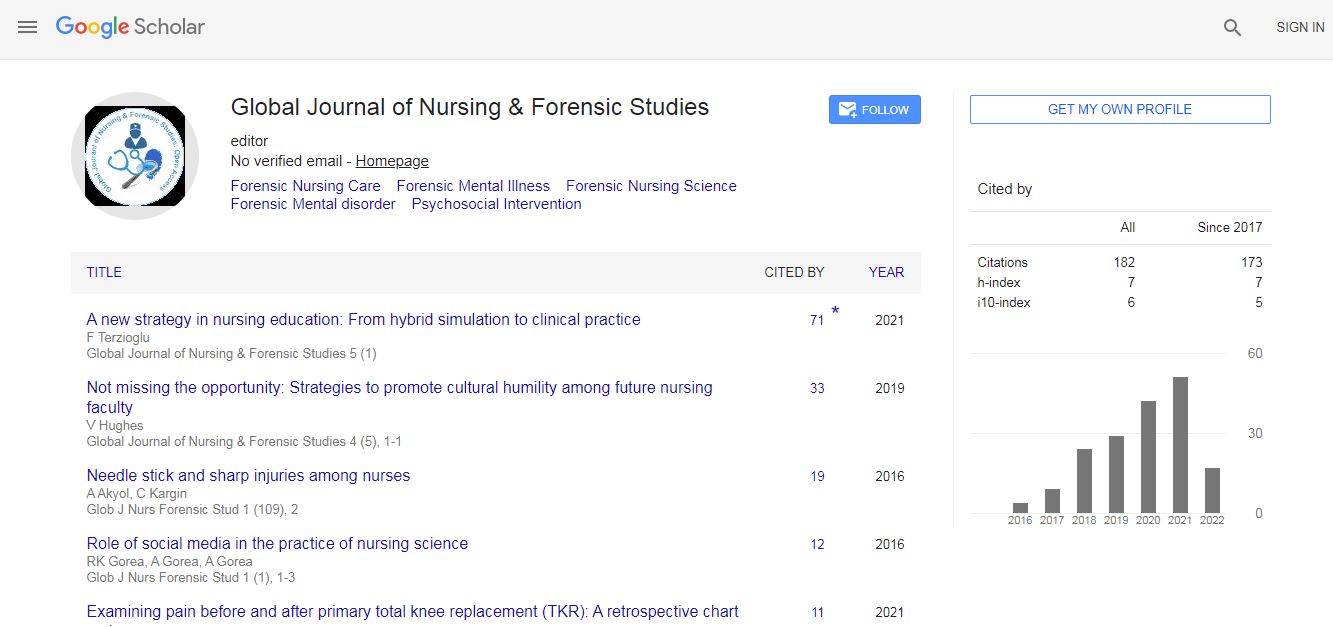Our Group organises 3000+ Global Conferenceseries Events every year across USA, Europe & Asia with support from 1000 more scientific Societies and Publishes 700+ Open Access Journals which contains over 50000 eminent personalities, reputed scientists as editorial board members.
Open Access Journals gaining more Readers and Citations
700 Journals and 15,000,000 Readers Each Journal is getting 25,000+ Readers
Google Scholar citation report
Citations : 82
Optometry: Open Access received 82 citations as per Google Scholar report
Indexed In
- Google Scholar
- RefSeek
- Hamdard University
- EBSCO A-Z
- Euro Pub
- ICMJE
Useful Links
Recommended Journals
Related Subjects
Share This Page
Metabolic and genetic disorders that affect the eye
11th Global Ophthalmologists Annual Meeting
Selwa A. F. Al-Hazzaa
King Faisal Specialist Hospital & Research Center, Kingdom of Saudi Arabia
Keynote: Optom open access
Abstract
Metabolic and genetic disorders that affect the eye may cause significant visual disturbances and sometimes blindness. Furthermore, metabolic disorders may have characteristic ocular findings that assist in their diagnosis, making the ophthalmologist an invaluable member of the team that cares for these patients. Metabolic disorders generally are inherited in an autosomal recessive fashion. There is reduced or absent function of one or more enzymes in a biochemical pathway that is critical to normal cellular function, growth and development. Accurate biochemical or molecular genetic diagnosis is essential for treatment for genetic counseling and for monitoring future pregnancies and children. Prompt and accurate diagnosis of the systemic disease aids in determining the prognosis and clinical expectations regarding career and life planning for the affected individual. In addition, it allows the early institution of treatment, when available and the provision of genetic counseling on the risk of recurrence in siblings or in children. Measurement of enzyme levels or mutation analysis of DNA from fetal cells obtained through amniocentesis or chorionic villus sampling allow for prenatal diagnosis of many of these diseases. Ophthalmologic findings such as corneal opacities, cataracts, a cherry-red spot and retinal degeneration are the earliest signs of metabolic disorders. Advances in molecular biology, biochemistry and enzymology have allowed a better understanding of metabolic diseases and their chemical defects. Serum, leukocytes or cultured skin fibroblasts can be assayed for enzyme activity and molecular testing can be performed if the genetic defect is known, circumventing the need for biopsy of the liver, muscle or other tissues. The systemic and ophthalmologic manifestations of IEOM from newborn screening in which the enzyme deficiency results in visually significant or diagnostic ocular manifestations in Saudi population shows 16 diseases are screened for and the overall incidence is 1-1222 for live newborns. This is at least three to four times higher than average reported worldwide incidence.Biography
Dr Selwa A. F. Al-Hazzaa; MD; FRCS (ophth) is a Shura Council Member Professor of Ophthalmology; College of Medicine; Alfaisal University Acting Chair; Dept. of Ophthalmology Senior Clinical Scientist & Consultant in Genetics; Research Center King Faisal Specialist Hospital & Research Center Female Advocate & influential personality in Saudi Arabia Named Arab Woman of year and most powerful Arab Woman by Forbes

 Spanish
Spanish  Chinese
Chinese  Russian
Russian  German
German  French
French  Japanese
Japanese  Portuguese
Portuguese  Hindi
Hindi 